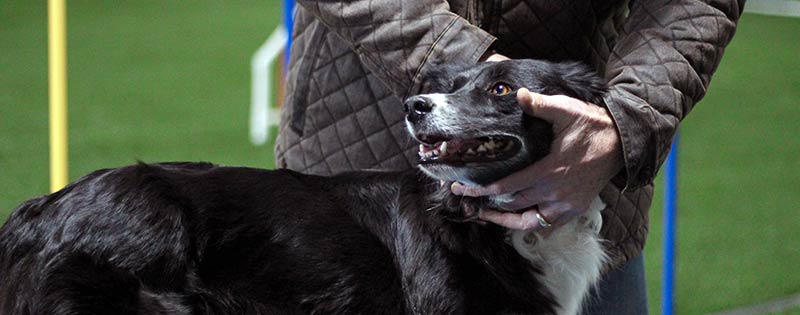by Brent Hearn •
We recently shared an article about how pets can improve your life. It seems only fair to pass along some information on a topic that may improve theirs: chiropractic care. We can practically see the incredulity on your face as you read this, so we’ll go ahead and answer your unspoken question: yes, chiropractic for animals is really a thing!
It makes sense if you think about it. Chiropractic deals with proper spine function, and—spoiler alert—most pets have spines. (Sorry, spiders.) And just like their job-having, kibble-feeding, two-legged companions, pets can sustain damage to their musculoskeletal system and suffer from the effects of that damage.
Here are a few things you need to know about chiropractic for pets…
Different Spines, Same Idea
There are differences between our pets’ spines and our own, of course, and it should probably go without saying that an adjustment on a horse requires a different approach than an adjustment on a cat. For that matter, there can be differences even among the same species. (For instance, some dog breeds are more prone than others to intervertebral disc disease (IDD), a degenerative spinal condition.)
When it’s all said and done, though, the general idea of chiropractic in animals is the same as it is for humans: ensuring proper spinal alignment and improving joint function can help, in many cases, to facilitate healing, help prevent additional damage, and alleviate pain.
Check With Your Vet First
If you think your pet may benefit from chiropractic, it’s a good idea to first schedule a visit with your veterinarian. After an examination, they’ll be able to: 1) tell you if your widdle Madam Schnooklepants or Purrlock Holmes is a good candidate for chiropractic, and 2) refer you to a properly credentialed veterinary chiropractor.
It’s Not a Replacement
Chiropractic for pets should be a complement to—and not a replacement for—traditional veterinary care. Chiropractic is intended as just one modality of a holistic approach to your pet’s care.
Yes, There’s Special Training Involved
Not surprisingly, such a specialized field involves specialized training. Those aspiring to become a veterinary chiropractor must attend a rigorous postgraduate program consisting of both lecture and lab components. A certification exam and continuing education requirements help ensure that those “working out the kinks” on your beloved pet know their stuff. One interesting tidbit: veterinary chiropractors can enter the specialization from either the veterinary side or the chiropractic side. That’s right—there are veterinarians who learn how to do chiropractic and chiropractors who learn to apply their craft to animals!
For more information on what it takes to become a certified veterinary chiropractor, check into the American Veterinary Chiropractic Association (AVCA) and the International Veterinary Chiropractic Association (IVCA) pages.
Sources:
https://animalclinicofcb.com/5-things-to-know-about-veterinary-chiropractic-care/
https://www.petmd.com/dog/when-see-dog-chiropractor-and-what-they-can-do









 ▶︎
▶︎  Why is the Discount Challenge prize amount $15,024? Because that is the average “per-occurrence” fine for Medicare inducements. That’s not $15,024 per patient, that’s not per provider, that’s PER VISIT. Stinks, doesn’t it? To us, the prize amount is worth the investment if we can help our profession better understand proper discounting.
Why is the Discount Challenge prize amount $15,024? Because that is the average “per-occurrence” fine for Medicare inducements. That’s not $15,024 per patient, that’s not per provider, that’s PER VISIT. Stinks, doesn’t it? To us, the prize amount is worth the investment if we can help our profession better understand proper discounting.